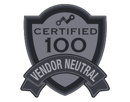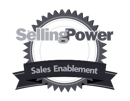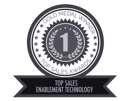
How to Win More Deals with DSRP’s Zoom In/Zoom Out “Move”
This is the fourth entry in my series introducing the main patterns and “moves” from DSRP theory to structure more successful complex B2B sales. If you’ve been following along, you know that I connected with Derek and Laura Cabrera of Cabrera Lab last year and recently published a paper in collaboration with them on how salespeople can structure their thinking to structure deals that win.
The first three posts in this series covered the “D,” “R,” and “P” in DSRP. This week, we’re going to talk about the “S” and its related move, Zoom In/Zoom Out.
What Is DSRP?
DSRP is a theory that explains the algorithm for thinking and introduces mental “moves” to train our thinking abilities. It simplifies (systems) thinking by breaking it down into four interrelated patterns: Distinctions, Systems, Relationships, and Perspectives (D+S+R+P).
Each aspect of DSRP offers specific moves used as mental exercises. An essential aspect of DSRP is that these concepts do not exist in isolation or linearly; they are simultaneous and fractal, allowing for infinite combinations and complexity.
Zoom In/Zoom Out - The Related Move
The “S” in DSRP refers to systems, meaning how we group parts into wholes and break wholes into parts. The related move is “Zoom In/Zoom Out.”
Consider, for example, a bicycle. In DSRP language, a bicycle can be seen as a “system.” It is a “whole” that is self-contained and self-sustaining. If we “Zoom In” on a bicycle, we can see that it consists of multiple smaller systems. There is a brake system, a gear system, a seating system, and a propulsion system.
Likewise, we can “Zoom Out” from the bicycle and see that it is part of a larger system. For instance, the system of transportation for the person who owns the bike may also include a bus pass, a car, or ride shares. It is also part of the larger city transportation system, which includes other vehicles, roads, bike paths, and other infrastructure.
Here’s a 5-minute walk-through video:
Zoom In/Zoom Out in Complex Sales
In B2B complex sales, we can use the Zoom In/Zoom Out move in various ways. Perhaps the simplest example of “Zoom Out” is when we understand that each individual we communicate with is part of a larger system—their department—and that the department is part of a larger system—the company. Within each department, we can zoom in to see smaller systems, including the team, the tools, and the structures and processes they use.
Salespeople sometimes get stuck thinking that the solution they’re providing is the only system that matters (“when all you have is a hammer, everything looks like a nail.”). As soon as they reach someone who might be a prospective buyer, they jump into demonstration mode, showing and telling the other person everything about this marvellous system they’re selling.
Salespeople who can help structure thinking will become decision-making catalysts.
The Zoom In/Zoom Out move helps us understand that the person we’re interacting with is not the only part of the larger system that matters. It allows us to Zoom Out to recognize that there are other stakeholders and other problems and solutions within those larger systems. It also enables us to Zoom In and see how each department and aspect of the larger system contains elements that may impact the problem and the buying decision.
What It Looks Like to Zoom Out on a Complex Sales Project
When we approach a complex sales project with the Zoom Out move, we can ask valuable questions to help us understand the system within which the problem exists. Questions like, “Who else cares about this problem?” and “What other departments, if any, are impacted by this problem?” and “How would fixing this help you better achieve your mission?” It also helps us identify and understand the larger initiatives within the company as a whole that we can align with in order to obtain stakeholder buy-in.
What It Looks Like to Zoom In on a Complex Sales Project
Once we Zoom Out and see all the many systems that contain the problem we’re trying to solve with a potential customer, we can also Zoom In on aspects of each of those systems. For instance, recognizing that the problem is contained within a larger company, we can Zoom In to decide who within the larger company is also affected, beyond the immediate contact. This may mean that we decide to include the CEO or CFO in the conversation, or perhaps engage an external consultant who has the ability to put the project to a halt.
We can also see that other systems, such as technology and personnel, are affected within the affected department. Each of these systems is affected in different ways and can impact the buying decision. A salesperson who understands these factors can do a better job of helping the customer navigate complexity and arrive at a positive purchasing decision.
Your Product Exists Within a Larger System and Contains Smaller Systems, Too
The Zoom In/Zoom Out move can also help you understand your own product’s position and components. For instance, our product lives inside a larger category commonly called “CRM.” In that sense, we are part of a larger system of solutions called “CRM platforms.”
Understanding this enables us to zoom back in on others in our category to understand their strengths, weaknesses, and our position within the larger system. This in turn enables us to do a better job of connecting and communicating with the buyers we are best positioned to help.
Likewise, our product contains many smaller systems within the larger system. We have a prospecting module, a sales project module, and an account growth module. Additionally, we have content management, integrations, calendar and email capabilities, and, of course, our teams that support the product. It’s important for our salespeople to understand the components of our product and be able to zoom in on the parts most relevant to the problems our potential customers are experiencing.
Zoom In/Zoom Out Helps You Solve the Right Problems In the Right Way
Customers want to minimize risk and solve the correct problems effectively, which is why they are well-served by using Zoom In/Zoom Out to ask the right questions, understand what’s happening, and choose the right solution.
Salespeople who can structure their approach utilizing this tool will become decision-making catalysts by helping their prospects make better decisions and win more deals.

By George Brontén
George is the founder & CEO of Membrain, the Sales Enablement CRM that makes it easy to execute your sales strategy. A life-long entrepreneur with 20 years of experience in the software space and a passion for sales and marketing. With the life motto "Don't settle for mainstream", he is always looking for new ways to achieve improved business results using innovative software, skills, and processes. George is also the author of the book Stop Killing Deals and the host of the Stop Killing Deals webinar and podcast series.
Find out more about George Brontén on LinkedIn







